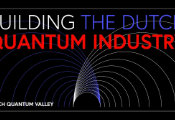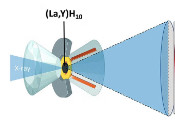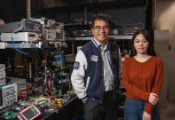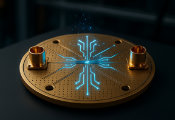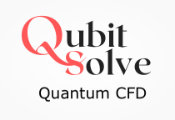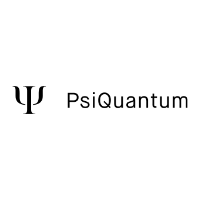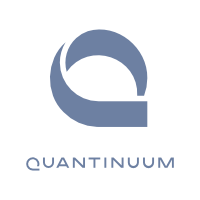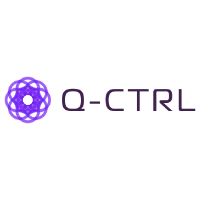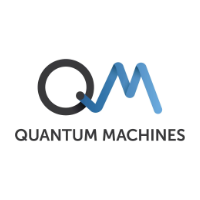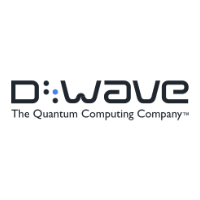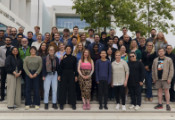Computing With Atoms
February 14, 2025 -- Quantum computers are expected to perform certain calculations – such as those underlying the design of wind turbines and aircraft engines, material development, or climate research – much faster than today’s computers. And that’s why companies like Microsoft, Google, and IBM are heavily investing in them. In 2022, the Garching-based start-up planqc, a spin-off from the Max Planck Institute of Quantum Optics, entered the race – with its own technical concept. The company’s first quantum computers are expected to be operational by 2027.
“Do you see the glass cell?” asks Johannes Zeiher in the lab. Through a labyrinth of optical components, devices, and wires, you can glimpse a small quartz glass cell. If the experiment were running, you would see a cloud of metal atoms glowing as they float in a vacuum. This could form the computing core of a quantum computer in the future – and it’s also an enchanting visual aesthetic. Various techniques are currently being researched in the race to create practical quantum computers that will solve certain problems much faster than the computers of today. Start-up planqc – the name is a portmanteau of “Planck” and “quantum computer” – is betting on clouds of gaseous atoms. Johannes Zeiher is a scientist at the Max Planck Institute of Quantum Optics in Garching and one of the founders of planqc, a spin-off of the institute.
The start-up is currently setting up operations in a former hardware store in Garching. The choice of this location was due to the particularly solid basement, explains Sebastian Blatt, chief developer and also a founder of planqc as well as group leader at the Max Planck Institute of Quantum Optics: “They don’t build basements this solid anymore. This one even stays cool in summer, which saves on electricity costs for running air conditioning.” Renovations and conversion work are currently underway inside. Meanwhile, a cleanroom tent is housing a lab – or to be more precise, the development and production facility for future quantum computers. It already contains an optical table the size of a ping-pong table, on which optical devices for the planqc computer are being developed and tested. Around it, several “racks” are arranged – technical shelves, like those used for computer servers. They contain lasers in addition to test and measurement equipment.
Planqc is not only developing a new technology for a freely programmable quantum computer, but also the computational instructions – quantum algorithms – that the computer is intended to process. A quantum algorithm can be thought of as the equivalent of software in conventional computers. Since quantum computers work differently from conventional computers, they may be able to solve some specific tasks faster. This means that instead of replacing classical computers, they will be able to complement them in certain tasks. Currently, however, there are only a few computational instructions for quantum computers. How versatile they will be in practice also depends on the quantum algorithms that researchers have yet to develop. That’s why the algorithms team at planqc is so important, says Sebastian Blatt.
In search of algorithms
The development of the algorithms is led by Martin Kiffner, who joined the company from the University of Oxford. “He is an expert in quantum algorithms, particularly for fluid dynamics,” explains Blatt. “Fluid dynamics calculations are used practically everywhere. That’s one of our key areas in algorithm development.” Fluid dynamics, for example, can be used to calculate the highly complex air or water flows around turbine blades, a task that requires immense computational power, but is essential for developing efficient generators and engines. Quantum computers could offer advantages here in the future. They could also accelerate the development of materials, especially those reliant on quantum properties – such as materials used in ultra-sensitive sensors or novel semiconductor electronics. After all, quantum computers are likely to simulate quantum properties particularly efficiently. In addition, they might also be able to calculate complex chemical compounds, such as new medical drugs. Some experts also expect that these computers will optimize logistics routes or better identify patterns in atmospheric phenomena, thus making weather and climate forecasts more precise. However, these applications currently exist only as concepts – it is still unclear whether they can be turned into reality.
That’s why the planqc team is also engaging with industry representatives to identify tasks in which quantum computers could harness their speed advantage. “Contacts like these help us understand which applications of quantum computers are of interest to business,” says Blatt. Alexander Glätzle, the third co-founder and managing director of planqc, has experience in bridging the gap between quantum physics and business. His background is theoretical quantum physics, having worked, among other places, at the University of Oxford. In 2018 he moved into business, where he worked as a consultant in the commercialization of quantum technologies. The reason there are such high hopes for quantum computers, despite the fact that their potential applications still need to be explored, lies in how they achieve their computational power (see MaxPlanckResearch 2/2022 and Techmax 36). The technology behind the planqc computer is based on the ability to trap certain elements – such as alkali metals like rubidium and lithium, and alkaline earth metals like strontium – using a clever combination of laser light and magnetic fields.
When Sebastian Blatt presents the concept, he sometimes faces skepticism: “This isn’t a real computer – it doesn’t even have a chip,” he’s occasionally told. Many of the people he talks to have a concept of computer processors shaped by current technology. Two approaches that better align with this idea compete with planqc’s technology, as they involve real chips. One of these approaches involves qubits (quantum bits) that consist of superconducting circuits, in which electricity flows without resistance at very low temperatures. This technology is being researched by companies like IBM, Google, and the Finnish start-up IQM, which has a branch in Munich. In another concept, ions (charged atoms) perform quantum logical operations while being trapped on a chip in a specially shaped electric field known as a Paul trap. As with the electrically neutral atoms that planqc works with, the ionic qubits are controlled and manipulated using laser beams.
Robust devices according to industry standards
The company hopes that, with the approach pursued by planqc, a larger number of atoms – meaning qubits – can relatively easily be united into a quantum processor in the optical lattices. Long-term basic research at the Max Planck Institute of Quantum Optics has contributed to the development of this field. Building on the results of this research, planqc was founded in 2022. Johannes Zeiher, who continues to conduct basic research, explains his personal motivation as follows: “For me, it’s clear that neutral atoms are a promising technology for quantum computers. That’s why we need to take the first steps to explore the potential applications of these machines.” Additionally, the extensive collaboration between commercial development and basic research helps advance both. “In basic research, we essentially create prototypes that are optimized for specific areas, free from commercial constraints,” says Zeiher. “Every now and then, they lead to breakthroughs and open up entirely new possibilities.” Based on these insights, planqc develops robust commercial devices that meet all industry standards. Zeiher hopes to eventually use such reliable devices in basic research labs as well.
Planqc is growing within the quantum ecosystem of the Munich Quantum Valley. “We are the first spin-off in the Munich Quantum Valley,” says Sebastian Blatt. As a flagship project, planqc is also supported by the German government through a partnership with the German Aerospace Center (DLR). The significant interest in the Garching-based start-up is also fueled by the federal government’s Quantum Technologies Action Plan. “It’s stated goal is to have a digital quantum computer with 100 qubits by the end of 2026,” says Blatt. “And the only commercial project in Germany with the same objective is one we are working on together with the DLR.” This project is called DiNAQC, which stands for Europe’s First Digital Neutral-Atom Quantum Computer. Planqc is receiving EUR 30 million for the construction of the demonstrator, initially with 100 qubits. The apparatus is set to be operational at the DLR in Ulm by spring 2027, almost exactly in line with the highly ambitious political action plan. This quantum computer will be used to test the first quantum algorithms for practical applications. “We’re also taking the first steps toward quantum error correction there,” explains Blatt.
Miniaturized quantum computers
A correction mechanism is necessary in quantum computing because quantum information is extremely sensitive to even the smallest disturbances. It must be carefully stabilized and checked for errors. To stabilize it, the strategy is to group multiple physical qubits – at planqc, these are the atoms – into logical qubits. If an error occurs in a physical qubit, the quantum computation can still continue. For error correction, auxiliary qubits are introduced to serve as sensors for disturbances – like canaries in a coal mine. As long as a quantum computation is running, the logical qubits cannot be checked for errors; otherwise, the computation would be interrupted. However, thanks to the error reports from the auxiliary qubits, the result can be corrected afterward. Thus, a quantum computer ultimately requires tens of thousands or even millions of physical qubits.
The technology required for a planqc computer, including the optical devices and vacuum chambers, still occupies entire laboratories. And that’s why miniaturization is a goal of planqc’s second major project, which is receiving EUR 20 million in funding from Germany’s Federal Ministry of Research (BMBF). In this project, the start-up, together with the Max Planck Institute of Quantum Optics at the Leibniz Supercomputing Centre in Garching, is building a device called MAQCS, short for Multi-Core Atomic Quantum Computing Systems, which is set to be completed by the end of 2027. This computer will feature 1000 neutral atoms as qubits and be integrated as a coprocessor into the conventional supercomputers located there, all within compact, space-saving racks. “We also want to fit the vacuum chamber with the atoms into one of those kinds of racks,” explains Blatt. “We’re doing engineering work here!” As a result, planqc also needs engineers. “The company needs to grow now to complete the projects on time.” So, it’s fortunate that the start-up, which currently employs around 50 people, secured additional millions in private venture capital in the summer of 2024. This brings its current financing to EUR 87 million – including the shares in the two major projects.
It’s still uncertain whether neutral atoms in optical lattices, superconducting circuits, or ions in Paul traps will ultimately lead to a practical quantum computer. At least according to Piet Schmidt from the Natural Metrology Institute (PTB) in Braunschweig. It’s there that the physics professor develops highly precise optical atomic clocks, also based on ions in Paul traps. “Technologically, we’re using the same platform as the quantum computer,” Schmidt explains. He is a co-founder of the German start-up Qudora, which develops commercial quantum computers based on ions in Paul traps – and is thus a competitor to planqc. Piet Schmidt is impressed by the progress with neutral atoms, but adds: “It will slow down; at the moment, they’re benefiting from technologies that have already been developed in other areas.”
Given the goal of controlling thousands, tens of thousands, or more qubits, he sees significant technical challenges with all three techniques. With superconducting qubits, one unresolved issue is that the circuits require a large number of cables, which are excellent heat conductors. These cables carry heat from the environment into the cryostat, which is supposed to cool the superconducting chip like a high-tech thermos. It’s still not clear how it might be possible to cool a large number of qubits. There are also challenges in fabricating highly uniform circuits from the superconducting material, currently aluminum. For ions to be used in quantum computing, Schmidt believes miniaturization still needs to advance. Currently, not enough optical and electronic components can be integrated into the trap chips. In addition, it is still not possible to capture many ions in a single trap. Coupling multiple trap chips could be a potential solution here. With neutral atoms in optical lattices, Schmidt sees an obstacle that may sound like a technical detail but still needs to be overcome: the auxiliary qubits must be read out faster during the computation to enable error correction.
And what about the future? Piet Schmidt, like many researchers, is concerned about the hype surrounding quantum computers. It has raised very high expectations in politics and business. However, a long-term funding policy is still required in order to give start-ups enough time to gradually commercialize quantum computers. “I recently visited colleagues in the US, at Harvard and MIT, some of whom also have their own start-ups,” he says. “Given the current progress, they are very optimistic.” Planqc is already placing its technology on the market: “Of course, anyone can buy a quantum computer from us,” emphasizes Sebastian Blatt. However, the company is still far from mass production, partly because each computer is still being developed and refined individually. “As soon as we’ve built a computer that customers want in large quantities,” says Sebastian Blatt, “planqc would, of course, also take the step toward mass production.”
Summary
Currently, three techniques for fully programmable quantum computers are being developed: superconducting circuits, ions in Paul traps, and neutral atoms in optical lattices. The start-up planqc, a spin-off from the Max Planck Institute of Quantum Optics, is focusing on the latter.
Planqc plans to design the first fully programmable quantum computers in collaboration with the DLR and the Leibniz Supercomputing Centre by 2027, with the goal of miniaturizing them. The company has access to EUR 87 million in funding for this project.
Research is currently underway to determine which computations quantum computers can perform faster than conventional computers. At the moment, applications are being explored in fluid dynamics, such as turbine optimization, materials development, and climate research.

